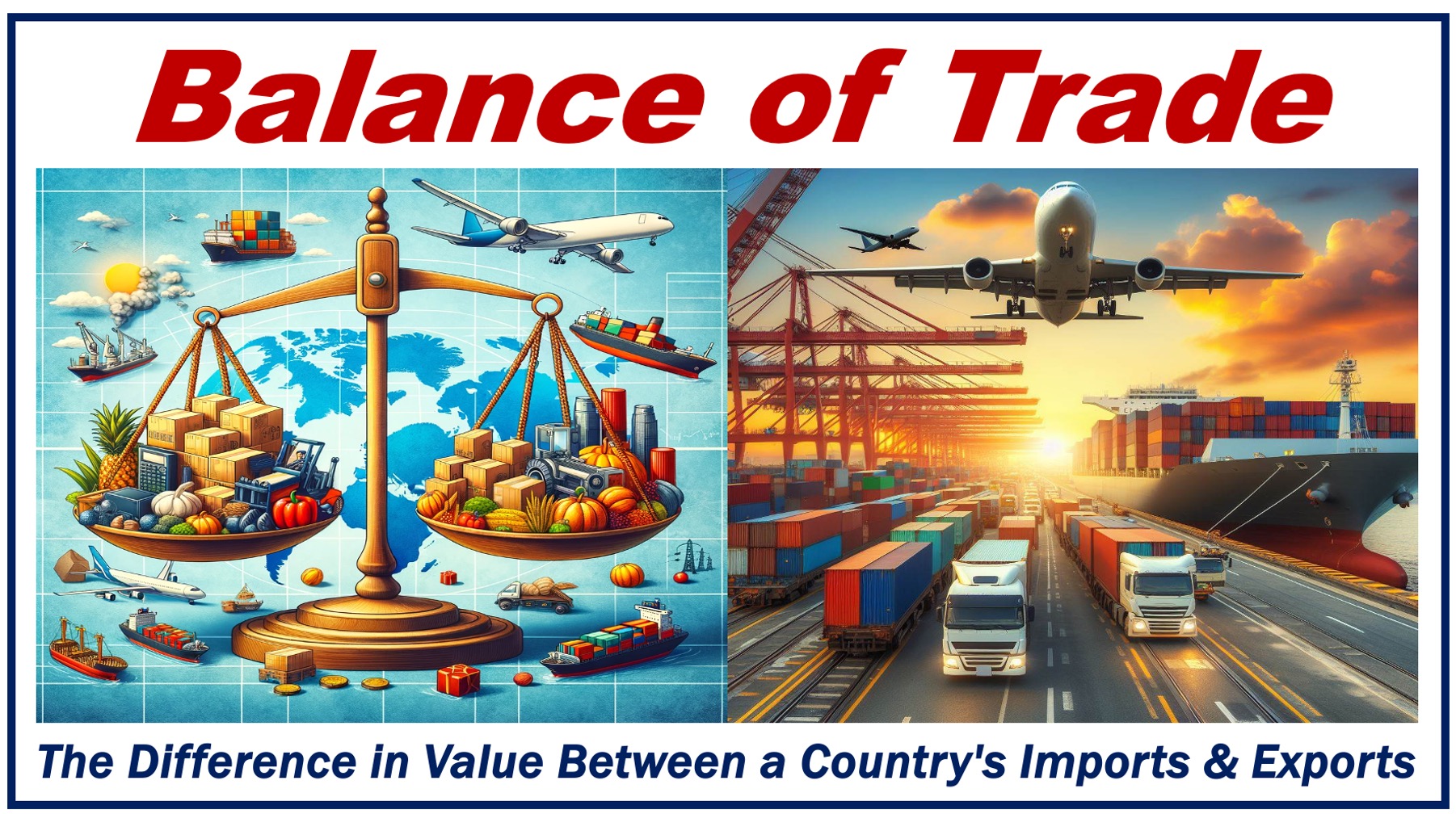A country’s Balance of Trade or Trade Balance is the difference between its total exports and imports over a specific period, which is usually one month or one year. It is like a financial report of a country’s international trade.
When a country exports, that is, when it sells goods or services to other nations, it earns money. Conversely, when it buys from abroad, that is, when it imports, it spends money.
Its balance of trade is the calculation of its earnings and expenditures.
Balance of trade – two types
If a country’s exports are greater than its imports, we say that it has a “trade surplus.” This means that it is earning more from exports than it is spending on imports.
We see a trade surplus as a positive situation. It indicates that the country’s goods and/or services are in high demand globally.
A trade surplus can lead to a stronger economy, more jobs, and greater FDI (foreign direct investment).
On the other hand, if a country’s exports are smaller than its imports, we say that it has a “trade deficit.” This situation means that it is spending more to buy goods and services from abroad than it is earning from the sales to other countries.
Put simply, as far as the balance of trade is concerned, more money is leaving than entering the country when there is a deficit.
While a trade deficit might seem negative, it is not necessarily a bad thing. It is good for the economy if the country is spending heavily on capital goods from abroad to boost production and productivity. Capital goods are durable assets that businesses use to produce goods or services, such as machinery, tools, and buildings.

What influences the balance of trade?
Various factors influence the trade balance, including:
Currency exchange rates – Fluctuations can make exports cheaper or more expensive, impacting trade balance.
The cost of goods and services – Competitive pricing enhances export attractiveness and affects trade balances.
Economic stability – Often synonymous with political stability, a stable economy encourages trade and investment.
Trade policies – Regulations, tariffs, and agreements directly shape trade volumes and the balance of trade.
Global economic conditions – A healthy global economy often increases demand for exports.
Domestic industry competitiveness – Strong domestic industries are likely to export more.
Exchange rate policies – Interventions by governments can manipulate currency values.
Inflation rates – Lower inflation can boost a nation’s exports by making them cost-effective.
Interest rates – These can attract foreign capital, impacting exchange rates and trade.
Consumer preferences – Preference for domestic or imported goods affects import and export levels.
Tariffs and quotas – These can limit imports and are a direct tool to influence trade balance.
Supply chain efficiency – Efficient supply chains lower costs and can lead to a trade surplus.
Technological advancements – Advanced technology can improve production efficiency and export volumes.
Labor costs and productivity – Competitive labor markets can lead to more economically priced exports.
Video explanation
This educational video explains what the term ‘xx’ means using simple and easy-to-understand language and examples.
